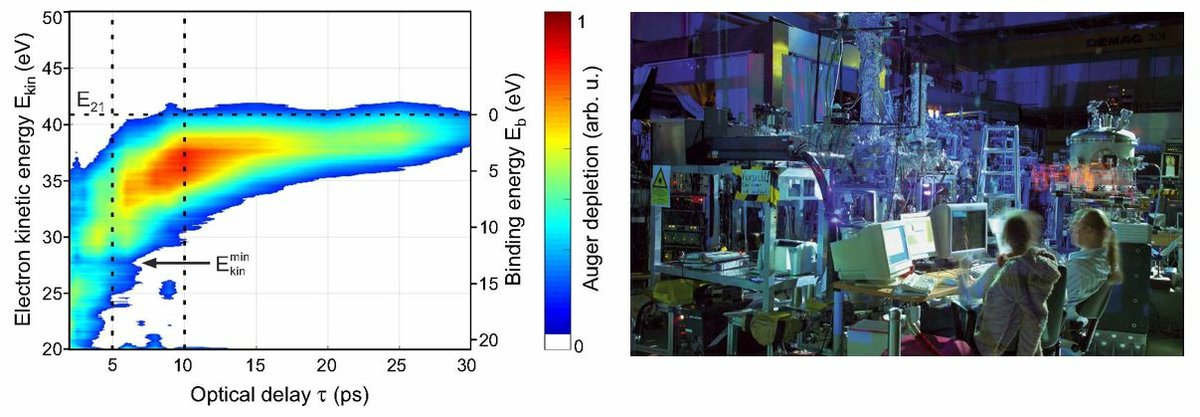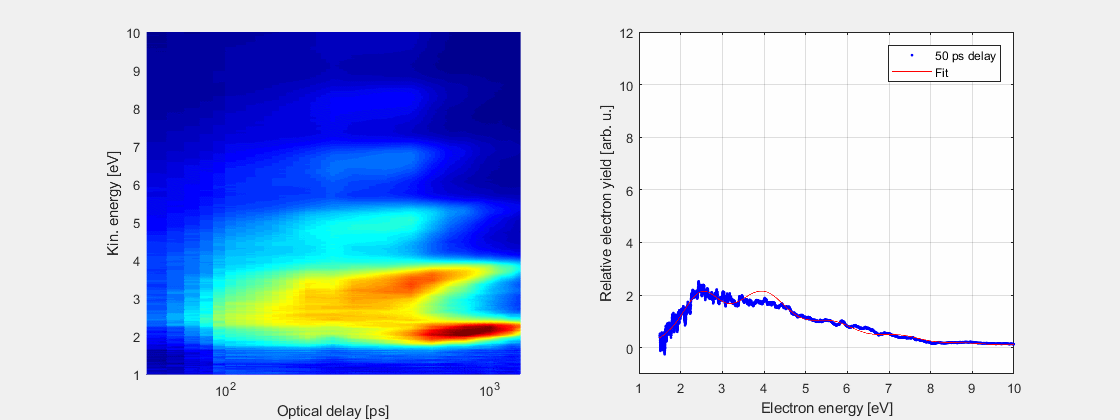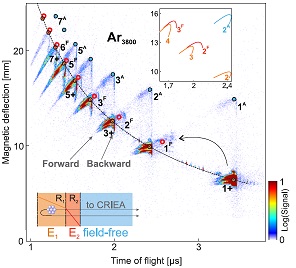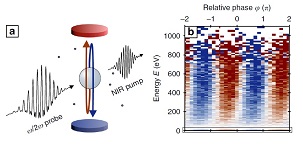Welcome to atto-nano science!
Josef Tiggesbäumker and Karl-Heinz Meiwes Broer
Our main field of research is the investigation of clusters, i.e. of particles as small as only a few nanometers, or even less. Such small particles are benchmark systems for nanostructured materials and offer the unique chance to explore the development of many-body phenomena in finite quantum systems. We study the properties of free atomic clusters and complexes embedded in ultracold helium droplets, with a special focus on the interaction between light and matter, ranging from electron emission up to ultrafast nonlinear dynamics in nanoplasmas. Read more...
Recent Highlights
Temporal development of a laser-induced helium nanoplasma measured through Auger emission and above-threshold ionization
Femtosecond pump-probe electron and ion spectroscopy is applied to study the development of a helium nanoplasma up to the nanosecond timescale. Electrons, bound by the deep confining mean-field potential, are elevated toward the vacuum level in the nanoplasma expansion. Subsequent electron recombination gives rise to transitions between He+ states, resulting in autoionization. The time-resolved analysis of the energy transfer to quasifree electrons reveals a transient depletion of the Auger emission, which allows for a temporal gate to map the distribution of delocalized electrons in the developing mean field. Furthermore, we trace the recombination of delocalized electrons near the vacuum level into highly excited Rydberg states. Transient above-threshold ionization is introduced as a diagnostic tool to resolve the dynamics. Thus, the development of the electron distribution in the nanoplasma mean-field potential can be monitored via the features observed in the emission spectra.
Kelbg et. al. Phys. Rev. Lett. 125, 093202 – Published 27 August 2020
Highly charged Rydberg ions from the Coulomb explosion of clusters
Ion emission from a nanoplasma produced in the interaction of intense optical laser pulses with argon clusters is studied resolving simultaneously charge states and recoil energies. By applying appropriate static electric fields we observe that a significant fraction of the ions Arq+ ( q = 1 − 7 ) have electrons with binding energies lower than 150 meV, i.e. nRyd ≥ 15 levels are populated. Charge state changes observed on a μs time scale can be attributed to electron emission due to autoionizing Rydberg states, indicating that high- ℓ Rydberg levels are populated as well. The experiments support theoretical predictions that a significant fraction of delocalized electrons, which are bound with hundreds of eV to the nanoplasma after the laser exposure, fill up meV bound ion states in the adiabatic expansion. We expect the process to be relevant for the long-term evolution of expanding laser-induced dense plasmas in general.
Nanoplasmonic electron acceleration by attosecond-controlled forward rescattering in silver clusters
In the strong-field photoemission from atoms, molecules, and surfaces, the fastest electrons emerge from tunneling and subsequent field-driven recollision, followed by elastic backscattering. This rescattering picture is central to attosecond science and enables control of the electron’s trajectory via the sub-cycle evolution of the laser electric field. Here we reveal a so far unexplored route for waveform-controlled electron acceleration emerging from forward rescattering in resonant plasmonic systems. We studied plasmon-enhanced photoemission from silver clusters and found that the directional acceleration can be controlled up to high kinetic energy with the relative phase of a two-color laser field. Our analysis reveals that the cluster’s plasmonic near-field establishes a sub-cycle directional gate that enables the selective acceleration. The identified generic mechanism offers robust attosecond control of the electron acceleration at plasmonic nanostructures, opening perspectives for laser-based sources of attosecond electron pulses.








